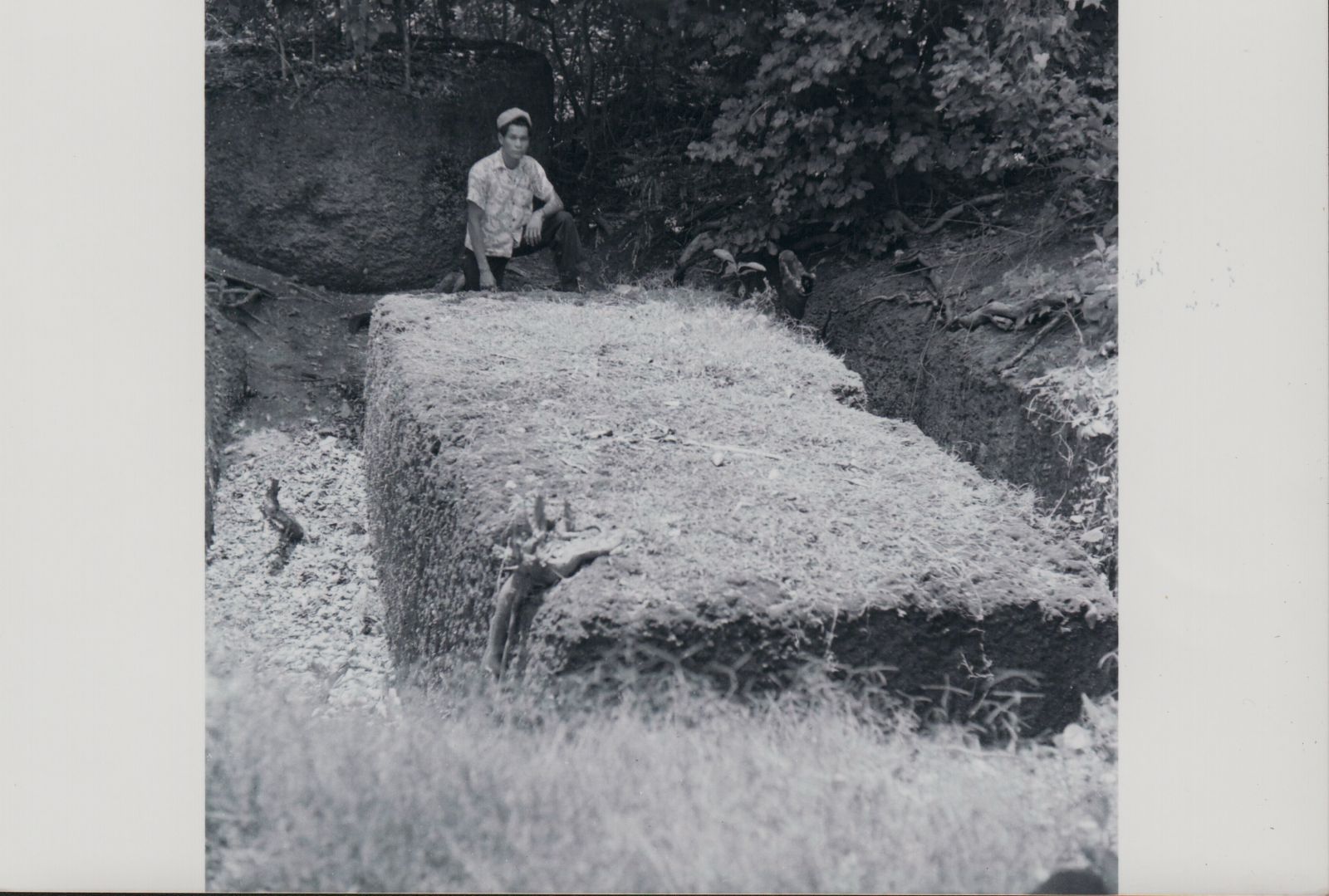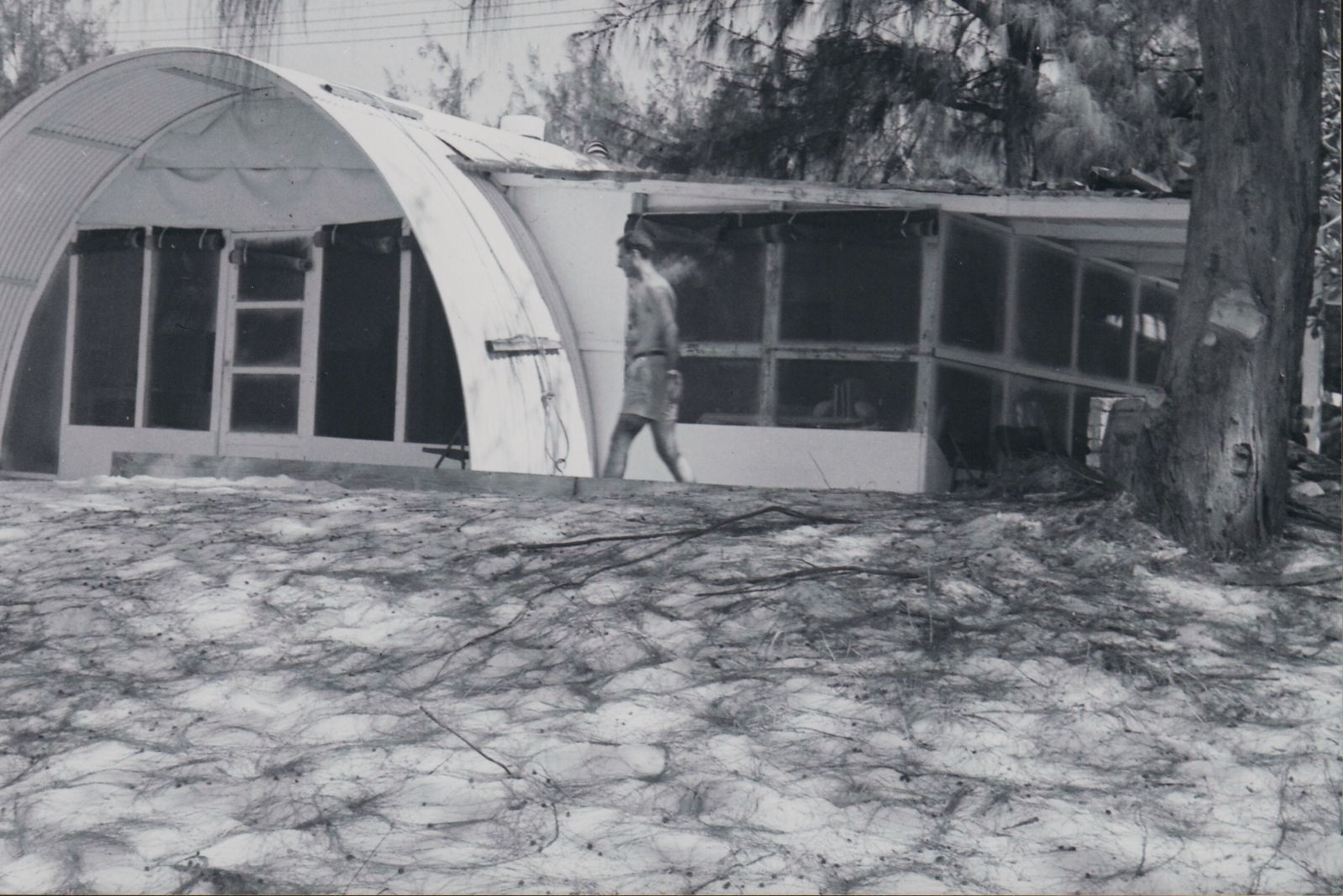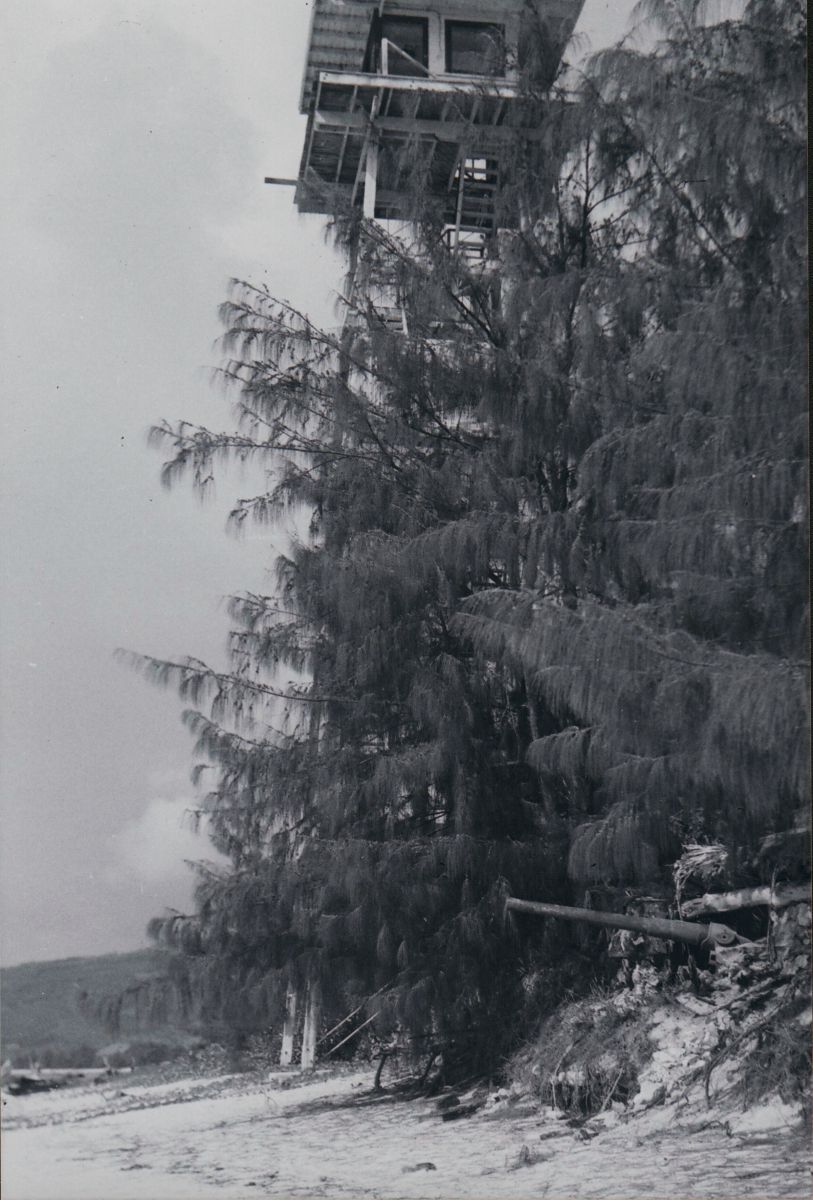Blog
Archaeology
A QUONSET HOUSE ON THE BEACH
 Because techology was very limited so soon after the end of World War II and the frequent risk of weather damage to materials due to typhoons, it is rare to come across photos of such high quality in such excellent condition. The following letter is taped to the inside of an album of original black & white photographs in the council's possession. No other information remains with the album, but from its pristine condition, it was gifted presumably by Hardy Spoehr, the author of the description:
Because techology was very limited so soon after the end of World War II and the frequent risk of weather damage to materials due to typhoons, it is rare to come across photos of such high quality in such excellent condition. The following letter is taped to the inside of an album of original black & white photographs in the council's possession. No other information remains with the album, but from its pristine condition, it was gifted presumably by Hardy Spoehr, the author of the description:
"Honolulu, Hawai'i
December 2016
SOME NOTES ON THE SPOEHR PHOTOS:
Aloha,
These photos were taken by my father, Alexander Spoehr, during his time in Micronesia, primarily on the island of Saipan but also on Tinian, and Rota between 1949 and 1951. A number of these photos also appeared in his three publications focusing on Saipan:
 (1)1952. "Time Perspective in Micronesia and Polynesia," Southwestern Journal of Anthropology, vol. 9.
(1)1952. "Time Perspective in Micronesia and Polynesia," Southwestern Journal of Anthropology, vol. 9.
(2)1954. Saipan. The Ethnology of a War-Devastated Island, Fieldiana: Anthropology, vol. 41.
(3)1955. Marianas Prehistory: Archaeological Survey and Excavations on Sasipan, Tinian, and Rota, Fieldiana: Anthropology, vol. 48.
I've included his family photos in the collection simply to make the collection as complete as possible.
REMEMBRANCES:

My recollections as a young boy of five and six years old during the time we lived on Saipan was one of adventure. We arrived on Saipan on a Mars "Flying boat" by way of Guam and Wake Island. The aroma of pancakes and maple syrup from our stop-over in Guam still remains with me today. My father met us at the airstrip on Saipan in our jeep which was to serve us as transportation throughout our stay. Most mornings I [would] awake before my parents in our quonset house on the beach and would go seeking what the tides had brought in on the beach - sometimes live ammunition other times large trochus shells. A sunken tank was in front of our

house and at least two or three days a week my father would swim out and around it but on occasions he would encourage me to swim with him - mostly on his back - and I can still remember the ghostly feeling of touching the barrel of the tank itself. On the beach there were also still Japanese artillery pointing out from beach enclosures and I remember a large tower on the beach - probably used for observation. Right next to our house was a tunneled hill which can be seen in some of the photos my father took of our house. It was used by the Japanese for shelter during bombardments.
Hardy Spoehr"

.
Last Updated 8/19/2024 3:36:57 PM
